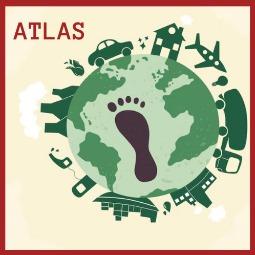Atlas4All
AtlasForAll – because together, we can make a difference.
Created on 31st March 2024
•
Atlas4All
AtlasForAll – because together, we can make a difference.
The problem Atlas4All solves
The Carbon Footprint Calculator addresses the pressing global issue of climate change by empowering individuals to understand and mitigate their environmental impact. Climate change, driven primarily by human activities such as burning fossil fuels and deforestation, poses significant threats to ecosystems, biodiversity, and human societies worldwide. One crucial aspect of combatting climate change is reducing carbon emissions, as carbon dioxide (CO2) is a major greenhouse gas contributing to global warming.
The Carbon Footprint Calculator provides a practical tool for individuals to quantify their carbon emissions across various aspects of daily life, such as transportation, energy consumption, diet, and waste generation. By inputting data such as daily commute distance, monthly electricity usage, daily meals, and waste production, users can obtain an estimate of their total carbon footprint. This information enables individuals to identify areas of high emissions and make informed decisions to reduce their environmental impact.
Through its ability to calculate carbon emissions from different sources, the calculator raises awareness about the interconnectedness of human activities and their environmental consequences. It emphasizes the importance of sustainable practices such as using public transportation, conserving energy, adopting plant-based diets, and minimizing waste generation. By promoting these behaviours, the calculator empowers individuals to contribute to climate change mitigation efforts on a personal level.
Furthermore, the Carbon Footprint Calculator serves as an educational tool, fostering greater understanding of the relationship between individual actions and their environmental repercussions. It encourages dialogue about sustainability and motivates individuals to take responsibility for their carbon footprint. By engaging users in the process of carbon footprint calculation and reduction, the calculator promotes a sense of collective responsibi
Challenges we ran into
One challenge we faced was wanting to try a new tech stack. We knew we wanted to make a carbon calculator, but using the same old tools we were used to wouldn't be as interesting. So, we decided to dive into something completely new. We spent time researching online, watching a few YouTube videos to learn about more available tech stacks, and then chose Streamlit to build and deploy a web app. Learning all about these new tools took time and effort, but we eventually got the hang of it by reading up and asking for help online.
Another tough part was making sure our project looked good on all screen sizes. We added some special touches using HTML and CSS, but that made it trickier to keep everything looking nice on different devices, especially within the constraints of Streamlit's functionalities. While HTML and CSS elements can be a bit tricky to handle on their own, integrating them with Streamlit features, where certain functionalities are restricted, created a little chaos. We had to do a lot of testing and tweaking to ensure both functionality and responsiveness. In the end, we learned a bunch about how to make stuff work well on any screen, which was pretty cool. Managing HTML and CSS elements, though a bit tricky on their own, required additional effort when combined with Streamlit's framework, making it a challenging yet rewarding experience.
